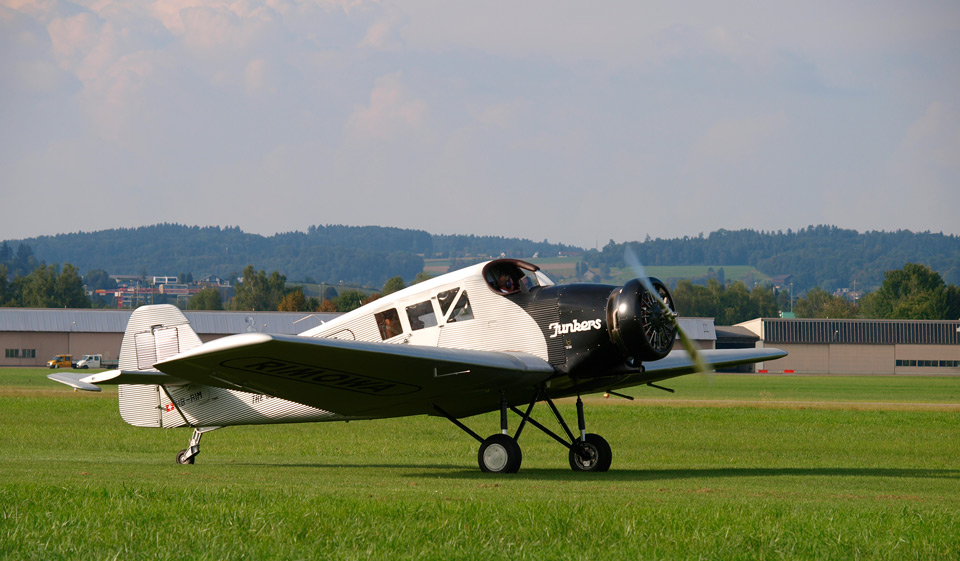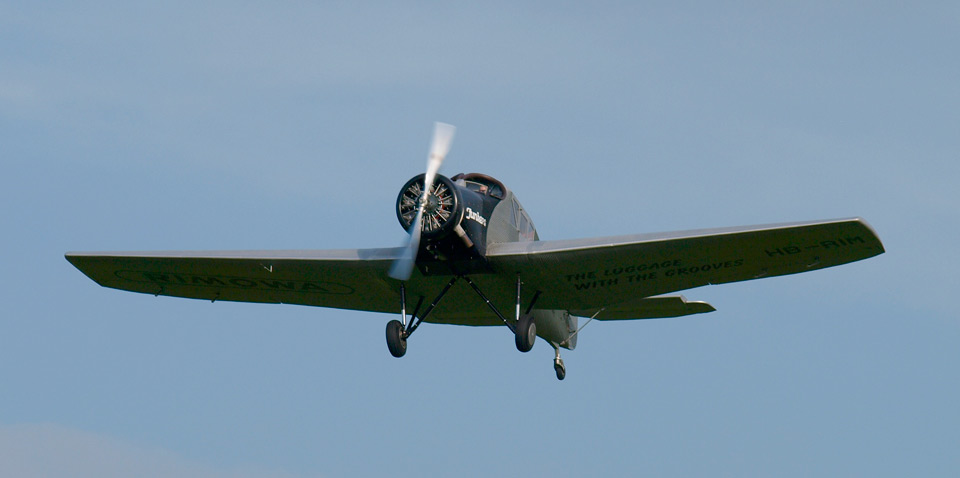Official Maiden Flight of Rimowa Replica Junkers F13
By Marino Boric
September 22, 2016 - After years of hard work, Rimowa’s Junkers F13 replica took off at 5:19 p.m. on Sept. 15 for its official maiden flight from the Dübendorf airport in Switzerland.
The official first flight of the replica Junkers F13, named “Annelise 2,” took place almost 100 years after the launch of the “mother of all commercial aircraft” in 1919.
The F13 took off from Dübendorf Air Base (LSMD), which was formerly Zurich’s primary airport, on mostly gray and rainy afternoon. But the weather was merciful, giving the Rimowa team a one-hour sunny break.
Ju-Air, the Association of Friends of Historical Aircraft (VFL), and the Rimowa team were all present that afternoon, but the happiest were probably the pilots in the open cockpit, test pilot Oliver Bachmann and Rimowa President and CEO Dieter Morszeck.
After taxiing down the grass runway at 5:13 p.m., the F13 began a 600-foot takeoff run, raising the tail and then lifting gently from the runway just seconds later. The deep sound of the Pratt & Whitney Wasp Junior R-985, nine-cylinder radial engine greeted invited spectators from around the world. The F13 flew two traffic patterns at approximately 100 knots before a smooth landing on the grass runway.
Morszeck was thrilled with the flight. “This is a dream come true for me,” he said. “The Junkers F13 is back in the air and I was fortunate enough to experience its official first flight as a member of the crew. What more could I ask for?”
Seven years of research, planning, and approvals were spent between the project’s genesis and the aircraft’s maiden flight. Ju-Air, VFL, and luggage manufacturer Rimowa joined forces to remake the F13 and embark on a journey into bygone aviation.
The original F13 was designed by German entrepreneur, engineer, and visionary Hugo Junkers in 1919. It was the first cantilever all-metal aircraft made of duralumin and was manufactured at the Junkers plants in Dessau, Germany until 1933. Morszeck, whose father first developed Rimowa suitcases using the same material more than 60 years ago, felt a sense of affiliation with Hugo Junkers’ project and therefore sponsored the construction of the first airworthy F13 replica.
“Hugo Junkers was the first person to use duralumin in aircraft construction,” Morszeck said. “Around the world, grooved sheet metal became the hallmark of Junkers aircraft and Rimowa suitcases … I wanted to give back the world an important cultural asset – not in a museum, but where it belongs: in the skies.”
A team comprised of the companies Kälin Aero Technologies, MSW Aviation, Naef Flugmotoren AG, AeroFEM GmbH, and Ju-Air spent 12,000 hours over the course of 24 months building the Junkers F13. The F13 team performed research in numerous archives spread across multiple countries in order to develop the construction plans. A Junkers JL6 at the Museum of Air and Space at Le Bourget in Paris proved to be especially valuable. It was scanned by lasers and the data was fed into 3-D construction software and used to complement the original blueprints.
The low-wing airplane, with an open two-man cockpit, consists of 2,600 parts held together by more than 35,000 rivets. The historical replica is powered by a 450-hp Pratt & Whitney Wasp Junior R985 9-cylinder radial engine. The airplane and its luxurious interior were built with materials and skills used in far gone times.
The F13’s Swiss certification is scheduled for the end of 2016.


